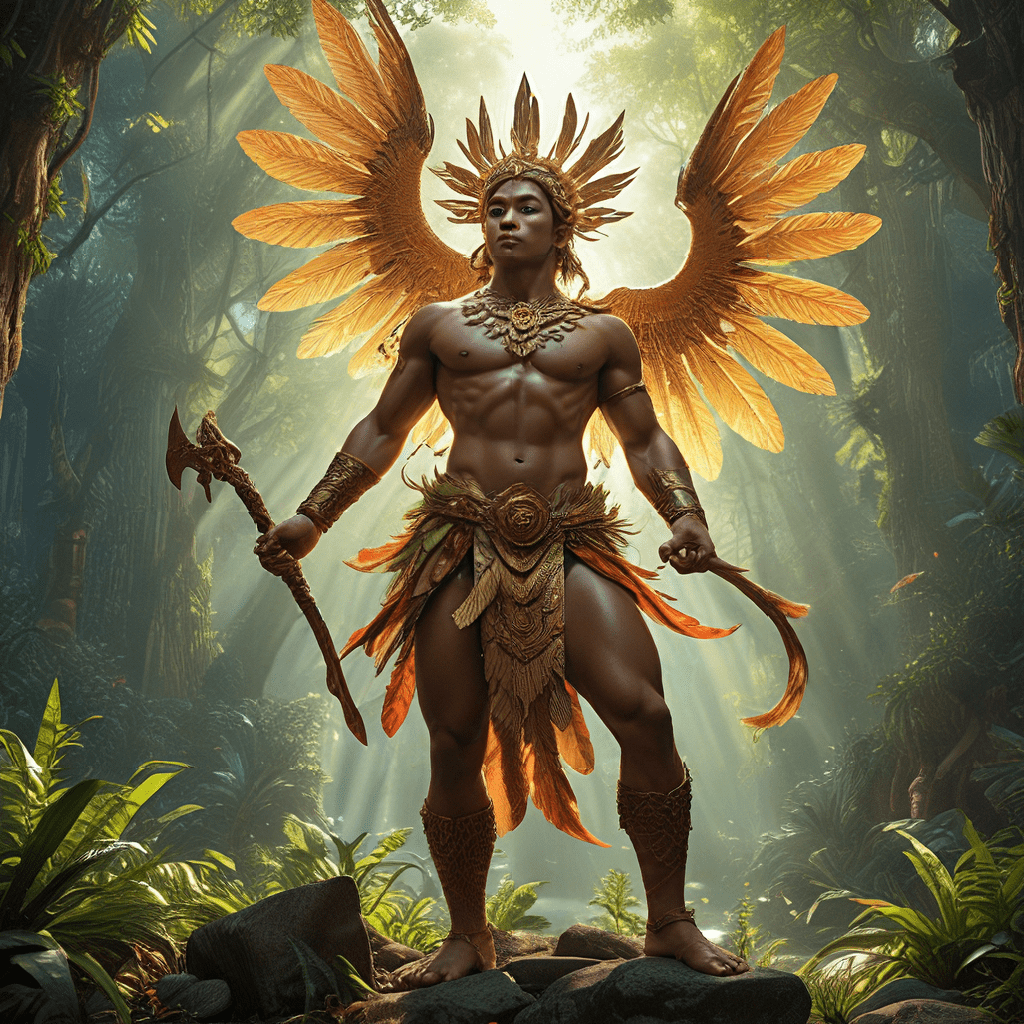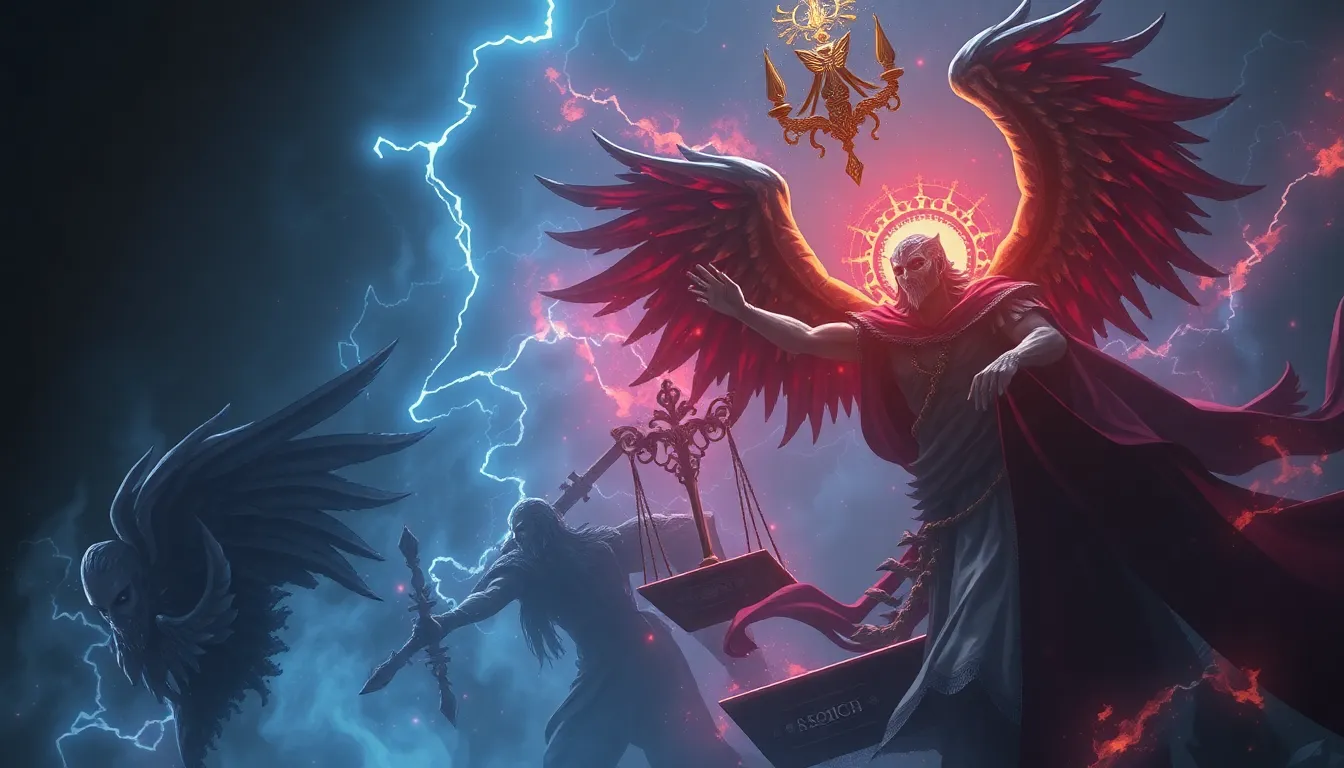Filipino Mythology: An Introduction
The Philippines, a nation of over 7,000 islands, boasts a rich tapestry of myths and legends. Filipino mythology, a vibrant expression of the Filipino soul, is a treasure trove of stories passed down through generations. These narratives offer a glimpse into the beliefs, values, and worldview of the Filipino people. At their heart lie themes of transformation and metamorphosis, reflecting the dynamic nature of life itself.
From the epic tales of gods and goddesses to the whimsical adventures of mythical creatures, Filipino mythology is a realm where the boundaries between the real and the supernatural blur. These stories are more than just entertaining narratives; they serve as moral guides, offering wisdom and lessons about the human condition.
The Transformative Power of Myth in Filipino Culture
Mythology holds a special place in Filipino culture. It serves as a powerful tool for shaping cultural identity, preserving traditions, and transmitting knowledge across generations. Filipino myths are woven into the fabric of everyday life, influencing everything from art and literature to social customs and beliefs.
One fundamental aspect of Filipino mythology is its emphasis on transformation and metamorphosis. These stories explore the constant state of change that defines the human experience. Whether it's a young woman turning into a magical creature or a lowly animal ascending to a divine status, the theme of transformation serves as a powerful reminder that nothing is permanent in life.
Transformations in Filipino Folktales: A Survey
Filipino folklore brims with stories of individuals undergoing extraordinary transformations.
- The Legend of Maria Makiling: This popular tale tells the story of a beautiful mountain nymph who transforms into a majestic eagle to protect the forest and its inhabitants. The story highlights the interconnectedness of nature and the importance of respecting the environment.
- The Manananggal: This terrifying creature, a shape-shifting vampire, embodies the dangers of greed and selfishness. Its ability to detach its upper body and transform into a winged monstrosity serves as a cautionary tale.
- The Tikbalang: This mischievous spirit, often depicted as a horse with a human head, embodies the capricious nature of fate. Its ability to change its form and mislead travelers serves as a reminder of the importance of choosing the right path.
- The Kapre: This giant, cigar-smoking tree spirit, is a symbol of strength and resilience. While sometimes feared, the Kapre is also seen as a protector of the forest.
These are just a few examples of the many transformation narratives present in Filipino folklore. These stories offer a glimpse into the diverse cultural and spiritual beliefs of the Filipino people.
The Role of Spirits and Supernatural Beings
Spirits and supernatural beings play a pivotal role in Filipino mythology. These entities, often possessing the power to transform, represent a powerful force in the lives of Filipinos. They can be benevolent, assisting humans in times of need, or malicious, wreaking havoc and bringing misfortune.
- Diwata: These benevolent nature spirits often inhabit trees, mountains, and rivers. They are protectors of the environment and offer aid to those who treat nature with respect.
- Engkanto: These mystical beings, often associated with fairies, live in hidden realms and can influence the lives of humans. They are said to possess magical powers and can transform into various shapes.
- Aswang: These malevolent creatures, often associated with vampires or witches, are feared for their ability to shapeshift and harm humans.
The presence of these supernatural beings highlights the belief in a spiritual world that is interconnected with the physical world. They serve as a reminder of the unseen forces that shape human lives.
Metamorphosis as a Symbol of Change and Growth
The theme of metamorphosis is not just a literary device in Filipino mythology. It serves as a powerful symbol of change, growth, and the journey of self-discovery. The transformative experiences that characters undergo in these stories often reflect the inner struggles and challenges faced by humans.
- The transformation from human to animal or spirit: This motif often symbolizes a spiritual awakening or a shift in consciousness. It reflects the idea that humans are capable of transcending their limitations and evolving into something more.
- The transformation from a lowly creature to a powerful being: This motif highlights the potential for growth and transformation within every individual. It inspires people to strive for greatness and to never give up on their dreams.
- The transformation from a virtuous person to a malevolent creature: This motif serves as a cautionary tale, emphasizing the importance of remaining true to one's values. It highlights the dangers of succumbing to greed, envy, or other negative emotions.
These transformative experiences are not just stories; they are mirrors reflecting the complex realities of human life. They offer insights into the human condition, the yearning for change, and the potential for growth and redemption.
The Significance of Animals in Transformation Narratives
Animals play a crucial role in Filipino transformation narratives, often acting as symbols of specific traits or representing the power of nature.
- The Eagle: This majestic bird, often associated with strength, freedom, and keen eyesight, represents the ability to see beyond the ordinary and to soar to new heights. In the legend of Maria Makiling, the eagle symbolizes the protective power of nature and the need for harmony between humans and the environment.
- The Snake: This serpentine creature embodies both danger and wisdom. In some stories, snakes are associated with transformation, representing the shedding of old skin and the emergence of a new self. However, they can also symbolize deception and temptation, highlighting the dangers of succumbing to negative forces.
- The Pig: This animal represents abundance, fertility, and good fortune. However, it can also embody greed and gluttony, serving as a warning against excessive indulgence.
- The Dog: This loyal companion symbolizes faithfulness, friendship, and protection. In some stories, dogs are depicted as supernatural guardians, protecting humans from harm.
Understanding the symbolic meanings of animals in Filipino mythology provides a deeper understanding of the stories and the values they convey.
Theories on the Origins of Filipino Mythology
The origins of Filipino mythology are deeply intertwined with the islands' rich history and cultural influences. Theories suggest a combination of:
- Indigenous Beliefs: Filipino mythology likely evolved from the oral traditions and beliefs of the various indigenous groups that inhabited the islands before the arrival of foreign influences. These traditions often centered on nature worship, animism, and the veneration of ancestors.
- Animistic Beliefs: The belief in spirits and supernatural beings inhabiting the natural world is a strong component of Filipino mythology. This animistic worldview emphasizes the interconnectedness of all living things and the importance of respecting the natural environment.
- Chinese Influences: The arrival of Chinese traders and settlers brought with them their own mythology and beliefs. Elements of Chinese folklore, such as the concept of dragons and other mythical creatures, are found woven into Filipino mythology.
- Spanish Influence: The Spanish colonization of the Philippines introduced Christianity and its associated mythology. While many indigenous beliefs were suppressed, aspects of Filipino mythology blended with Christian elements, creating a unique hybrid tradition.
The diverse influences on Filipino mythology demonstrate the complex evolution of culture and the blending of different belief systems.
Cultural Influences on Transformation Motifs
Transformation narratives in Filipino mythology are often influenced by the specificities of each region and community.
- Rural Communities: Many stories focus on the relationship between humans and the natural world, emphasizing the power of spirits and nature deities. These tales often serve as reminders to respect the environment and live in harmony with nature.
- Coastal Communities: Stories often involve mythical creatures associated with the sea, such as mermaids, krakens, and sea serpents. These narratives reflect the importance of the ocean in Filipino culture and the dangers and wonders it holds.
- Urban Communities: Transformation narratives in urban areas may focus on themes of social mobility, the struggle against poverty, or the dangers of the modern world. These tales reflect the rapid changes and challenges faced by Filipinos living in urban environments.
The diverse cultural influences on Filipino transformation narratives illustrate the richness and complexity of Filipino folklore and the way it reflects the diverse experiences of the Filipino people.
The Impact of Transformation Narratives on Filipino Identity
Filipino mythology plays a significant role in shaping Filipino identity.
- Sense of Community: Transformation narratives often emphasize the importance of community, family, and shared experiences. They reinforce the value of collective action and the responsibility individuals have to their communities.
- Values and Beliefs: These stories serve as moral guides, highlighting the importance of virtues like honesty, courage, respect for elders, and love for one's family. They also convey warnings about the dangers of greed, selfishness, and disrespect for nature.
- Cultural Pride: Filipino mythology provides a sense of cultural pride and heritage. It reminds Filipinos of their unique history, traditions, and beliefs, fostering a sense of connection to their ancestors and their shared cultural identity.
By preserving and celebrating their rich storytelling tradition, Filipinos continue to draw strength and inspiration from their myths and legends, ensuring their transmission to future generations.
Filipino Mythology in the Modern Era
Filipino mythology continues to influence contemporary culture, inspiring artists, writers, and filmmakers.
- Literature: Authors like Nick Joaquin and F. Sionil Jose have incorporated Filipino myths and legends into their works, exploring themes of identity, colonialism, and the complexities of Filipino society.
- Films: Filipino cinema has embraced mythology, creating films that reimagine classic legends and explore their relevance in modern times. This includes films like "Babae sa Septic Tank" and "The Healing."
- Video Games: Video games like "The Legend of Zelda: Majora's Mask" have been influenced by Filipino mythology, incorporating elements like mythical creatures and transformation narratives.
Through these diverse forms of expression, Filipino mythology remains a vibrant and enduring source of inspiration and cultural identity.
FAQs
1. What are some of the most famous Filipino myths and legends?
Some of the most famous Filipino myths and legends include the Legend of Maria Makiling, the Manananggal, the Tikbalang, the Kapre, and the story of Lam-Ang.
2. What are some of the major themes found in Filipino mythology?
Major themes in Filipino mythology include transformation, nature worship, the relationship between humans and spirits, the importance of community, and the consequences of greed and selfishness.
3. How has Filipino mythology been impacted by colonialism?
Filipino mythology has been significantly impacted by colonialism, with elements of indigenous beliefs blending with Spanish and American influences. Some indigenous beliefs were suppressed or reinterpreted, while others were incorporated into the dominant culture.
4. Why is it important to study and preserve Filipino mythology?
Studying and preserving Filipino mythology is important for understanding the cultural heritage of the Filipino people, preserving their traditions, and fostering a sense of cultural pride. It also provides valuable insights into the beliefs, values, and worldview of Filipinos.


